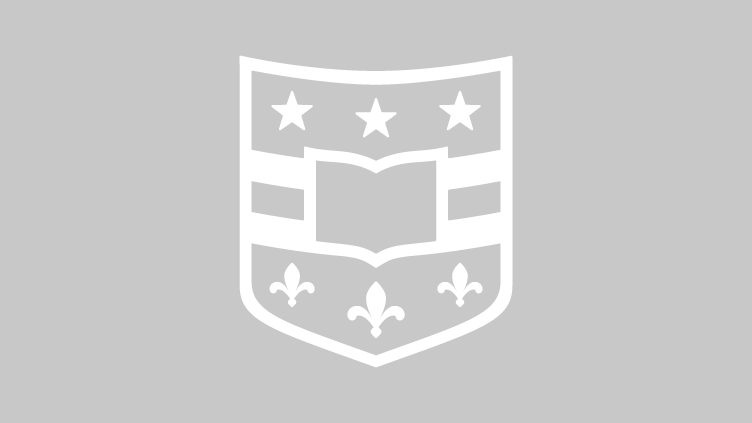Update on Campus Assault
University Police offer an update on recent assault on the South 40.
Lost Tennessee Williams poem published
An unknown poem by famed playwright Tennessee Williams was a fortuitous find for Henry I. Schvey, Ph.D., professor and chair of the Performing Arts Department in Arts & Sciences.
‘Rice gone bad’: Plant biologist investigates
A University plant evolutionary biologist has received a two-year, $1.12 million grant from the National Science Foundation to perform genetic studies on red rice.
Sustainability Web site offered
The members-only resources of the Web site for the Association for the Advancement of Sustainability in Higher Education now is available to everyone on the Danforth and School of Medicine campuses.
Washington University Symphony Orchestra to perform music from theatrical works Feb. 25
The Washington University Symphony Orchestra will present a concert of music drawn from theatrical works at 3 p.m. Sunday, Feb. 25, in the university’s Graham Chapel. Dan Presgrave, instrumental music coordinator in the Department of Music in Arts & Sciecnces, will conduct the concert, which highlights Aaron Copland’s music for the ballet Rodeo. Also on the program are the “Masquerade Suite” of Aram Khachaturian and Frederick Delius’s “The Walk to the Paradise Garden.”
HIV protein enlisted to help kill cancer cells
This PET scan shows high levels of an anticancer agent in the tumor.Cancer cells keep growing because they don’t react to internal signals urging them to die. Now researchers at the School of Medicine have found an efficient way to get a messenger into cancer cells that forces them to respond to death signals. And they did it using one of the most sinister pathogens around — HIV.
Apple’s bid to end music piracy protection may signal end to copyright system
Steve Jobs, chief executive of Apple Computers, has issued a challenge to the music industry, saying Apple would support an open online music marketplace if the four-largest music companies would drop the use of digital-rights management software — the technology that prevents the copying of music sold online. Jobs’ challenge, which some consider shocking, is just the latest brick to fall in the inevitable collapse of a legal wall that since 1999 has been obstructing technological progress and preventing people from enjoying more and better music at a lower price, suggests Michele Boldrin, Ph.D., an economist at Washington University in St. Louis who studies the hidden costs of intellectual property rights protections.
Enzyme critical for early growth of abdominal aortic aneurysms
Surgery is the only treatment for an abdominal aortic aneurysm, a weak spot in the body’s main artery that dilates dangerously over time. If the vessel ruptures suddenly before surgery to repair it, a quick death is virtually certain. Now, scientists say they have identified a key enzyme that triggers chronic inflammation in the aorta and promotes the growth of aneurysms. Their finding raises hopes for developing a drug that could prevent small aneurysms from enlarging to the point where surgery is necessary.
Mildred Lane Kemper Art Museum to present Reality Bites: Making Avant-garde Art in Post-Wall Germany Feb. 9 to April 29
303 Gallery, New YorkCollier Schorr, *Lina, Opening Braid, Bettringen*Since the fall of the Berlin Wall in November 1989, Germany has re-emerged as a potent intellectual and creative center within the international art world. This month, the Mildred Lane Kemper Art Museum at Washington University in St. Louis opens Reality Bites: Making Avant-garde Art in Post-Wall Germany, the first thematic museum exhibition to examine how contemporary artists have dealt — both directly and indirectly — with the social, economic and political ramifications of German unification.
Dred Scott case isn’t a ghost; stereotypes of inferiority are still felt in the courts
Terrell CreativeMarch 2007 marks the 150th anniversary of the Supreme Court’s momentous Dred Scott decision that denied full American citizenship to African-Americans and gave legal sanction to a racial hierarchy that would undermine the most basic principles of American justice. Experts say the anniversary should be an opportunity for deep national reflection on enduring issues of race and justice. In honor of this landmark case, Washington University in St. Louis will host a conference, titled “The Dred Scott Case and Its Legacy: Race, Law, and the Struggle for Equality,” from March 1-3.
View More Stories
